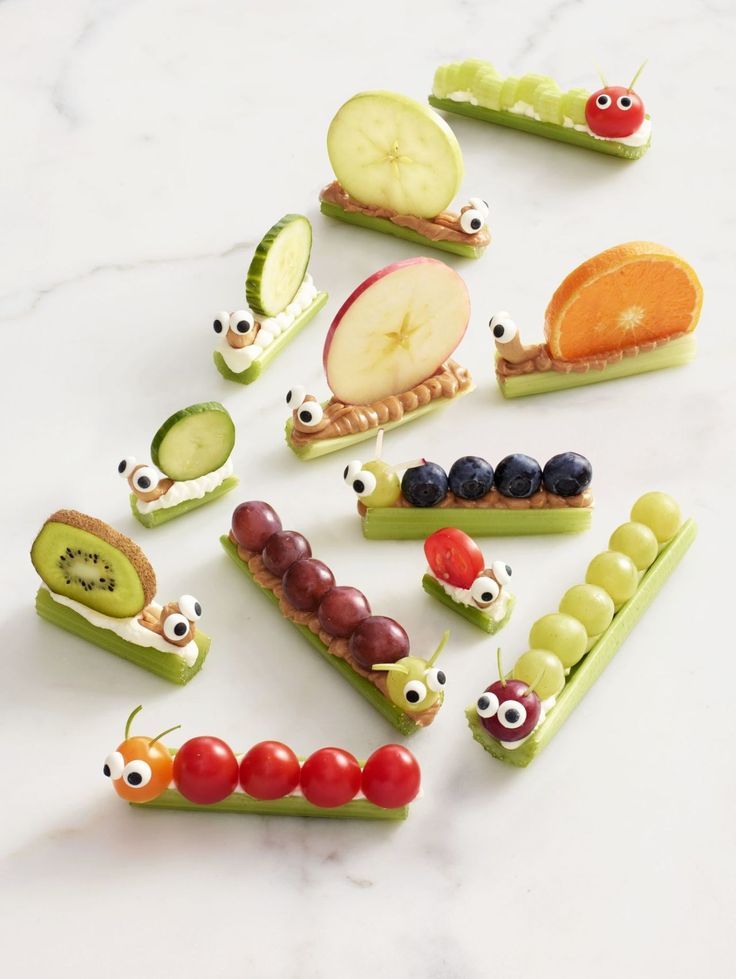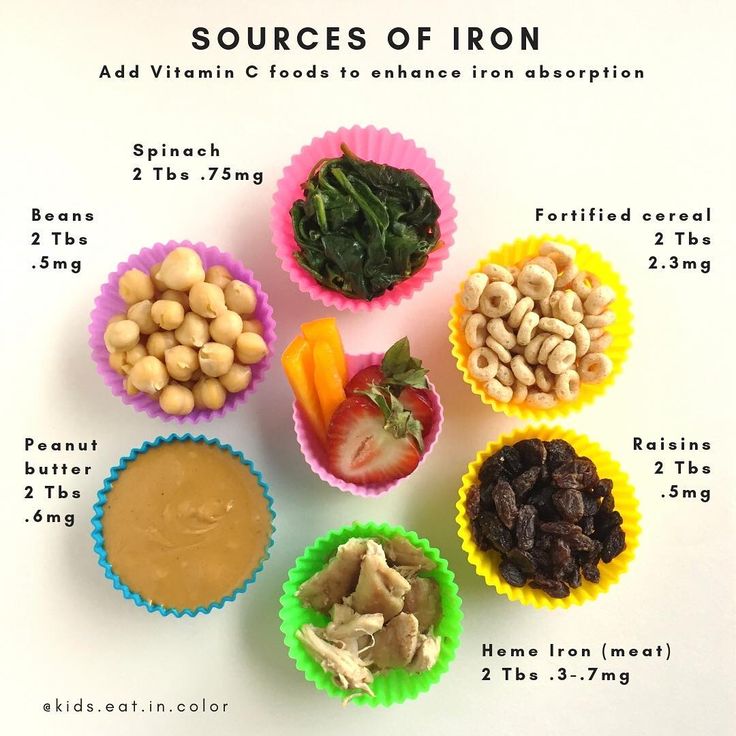Foods high in iron and zinc for babies
Breastfed Babies Need Iron & Zinc-Rich Foods around 6 Months
We asked Registered Dietitian, Nicole Silber, RD, CSP, CLC, for her take on the USDA’s 2020-2025 Dietary Guidelines for Americans. Nicole is a board-certified specialist in pediatric nutrition and has worked with hundreds of children with chronic medical conditions, food allergies, picky eating, oral-motor and sensory processing disorders, breastfeeding, gastrointestinal conditions, prematurity and obesity.
Answer: Formula-Fed! 😮
The 2020-2025 Dietary Guidelines for Americans recommends breast milk as the exclusive source of nutrition for babies until about six months, if possible, then continued breast milk through the first year, while also starting complementary, solid foods. Breast milk has many well-known health benefits (and memorable sayings, like “breast is best,”) but what’s not well known is that breast milk can often have low levels of important nutrients, such as iron, zinc, and vitamin D. That is why breastfed babies need vitamin D supplementation from birth. Around 6 months, when babies’ stores of iron and zinc begin to hit low points, breastfed babies should begin eating complementary foods rich in these nutrients.
If you have fed your 6-month-old exclusively breast milk since birth, my hat’s off to you! Now is the time to compliment his or her breast milk diet with foods rich in the following:
Iron is essential for your baby’s growth, as it supports brain, cognitive and immune development. Infants are born with a natural store of iron that they inherit from mom while in utero. These natural stores can vary depending on baby’s birth age, maternal iron status and timing of umbilical cord clamping. That is why babies born prematurely often have lower iron stores and require supplementation earlier. Typically, these internal iron stores get babies through their first six months of life. But, after that point, babies require iron from their external diets (food!).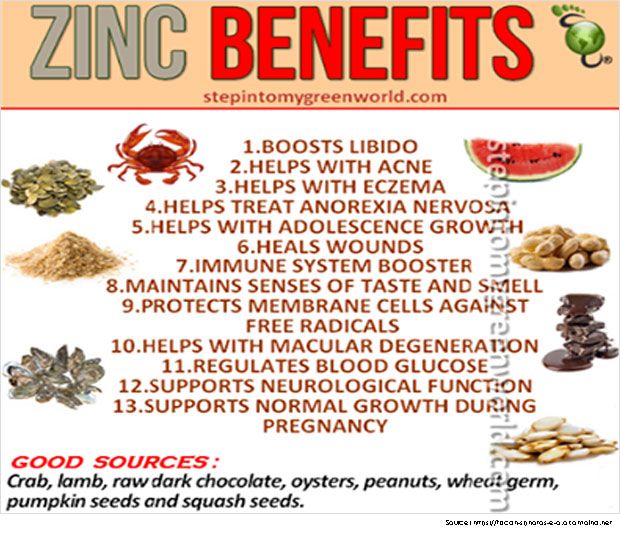 Formula has high levels of iron, so babies drinking formula are already getting the iron they need. (Providing iron-rich foods to formula-fed babies becomes needed once they wean off formula). Now, breast milk does have highly bioavailable iron, but not enough. Breastfed babies must source their iron from their diet if they are not taking an iron supplement. Unfortunately, 77% of infants fed breast milk have low iron intakes, during the second half of infancy when complementary foods should be introduced (source: Dietary Guidelines 2020-2025).
Formula has high levels of iron, so babies drinking formula are already getting the iron they need. (Providing iron-rich foods to formula-fed babies becomes needed once they wean off formula). Now, breast milk does have highly bioavailable iron, but not enough. Breastfed babies must source their iron from their diet if they are not taking an iron supplement. Unfortunately, 77% of infants fed breast milk have low iron intakes, during the second half of infancy when complementary foods should be introduced (source: Dietary Guidelines 2020-2025).
The Dietary Guidelines for Americans 2020-2025 recommend that around 6 months, begin to feed iron-rich foods, like iron-fortified infant cereals, beef, poultry, seafood, beans, and lentils. When choosing iron-fortified infant cereals, select a variety of grains, and avoid feeding exclusively rice-based cereals. Serve these iron rich foods in baby-safe consistencies. Cooked beef, poultry, seafood, and legumes typically blend very well with vegetable or fruit purees.
Pro tip: serve baby’s iron rich foods alongside a food source high in vitamin C (like citrus, bell peppers, or strawberries) to maximize the body’s absorption of iron.
Please consult with your child’s pediatrician or healthcare provider to discuss if your child requires an iron supplement.
Zinc is another important nutrient for infants, supporting growth and immune function. Like iron, it has also been found to be low in breastfed babies. 54% of infants fed breast milk have low intakes of zinc (source: Dietary Guidelines 2020-2025). The zinc content of breast milk is high for the first six months, but declines after six months, which is why breastfed babies must depend on zinc-rich foods when they begin eating complementary foods. Once breastfed babies are introduced to foods around six months, encourage a variety of zinc rich foods, many of which are also found to be high in iron, like meats, beans, and zinc-fortified infant cereals.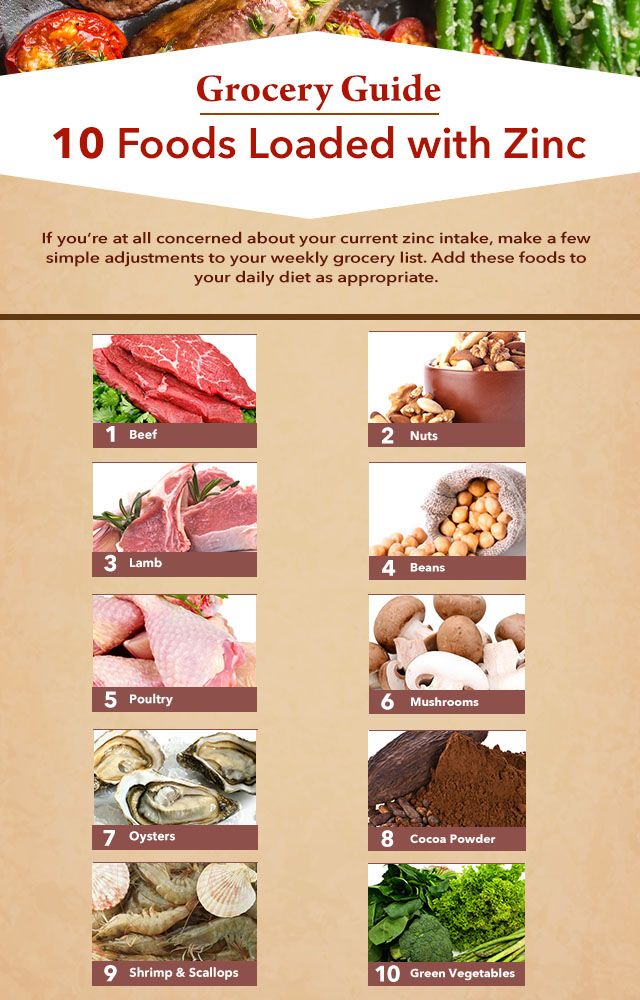 Serve them in baby safe consistencies. Most of them generally blend very well with vegetable and fruit purees. Formula has adequate zinc levels, so it is important to encourage zinc rich foods as babies wean off formula.
Serve them in baby safe consistencies. Most of them generally blend very well with vegetable and fruit purees. Formula has adequate zinc levels, so it is important to encourage zinc rich foods as babies wean off formula.
Vitamin D has many important functions, including supporting bone development and healthy immune systems. While formula has high levels of vitamin D, breast milk does not have enough, so typically, vitamin D supplements are recommended for all babies, shortly after birth. During the first year, it is a good idea to encourage foods rich in vitamin D, which are mainly dairy-based and fortified, like unsweetened, whole milk-based, Vitamin-D fortified yogurt, and certain fatty fish like cod, so that babies develop a preference for these foods as they age.
Please consult with your child’s pediatrician or healthcare provider to discuss if your child requires a supplement.
Vitamin B12 plays a role in keeping blood cells healthy. The levels of vitamin B12 in formula are sufficient, but the levels in breast milk are affected by maternal stores and moms’ diet. Vitamin B12 is mostly found in animal products, so people following a more plant-based diet, especially vegans, are more at risk to have low B12 levels. Breast milk from mothers eating plant-based diets may be low in vitamin B12, and their babies may require a supplement. Foods rich in vitamin B12 are beef, fish, poultry and eggs. Plant-based sources of vitamin B12 are limited, but include fortified infant cereals, nutritional yeast, fortified unsweetened soy milk, and tempeh.
Vitamin B12 is mostly found in animal products, so people following a more plant-based diet, especially vegans, are more at risk to have low B12 levels. Breast milk from mothers eating plant-based diets may be low in vitamin B12, and their babies may require a supplement. Foods rich in vitamin B12 are beef, fish, poultry and eggs. Plant-based sources of vitamin B12 are limited, but include fortified infant cereals, nutritional yeast, fortified unsweetened soy milk, and tempeh.
Please consult with your child’s pediatrician or healthcare provider to discuss if your child requires a supplement.
Omega 3 fatty acids, particularly DHA, supports healthy immune system, brain development, vision, sleep and even concentration. DHA levels in breast milk can vary depending on maternal levels, diet, and supplementation. It is important to introduce foods rich in DHA to all infants, breastfed or formula fed, so that they grow a preference and acceptance early in life. Foods rich in omega 3’s are fatty fish, like salmon and cod, DHA-fortified eggs, as well as plant-based sources like algal oil (oil from algae), chia and flaxseeds, which should be ground-up to prevent any choking.
Please consult with your child’s pediatrician or healthcare provider to discuss if your child requires a supplement.
Nicole is the creator of Tiny Tasters, a series of on-demand and live classes that teach parents everything they need to know about how to feed their babies and toddlers. Prior to her current roles she was a clinical nutritionist at the Morgan Stanley Children’s Hospital at New York-Presbyterian/Columbia and at NYU Langone/Fink Children’s Ambulatory Care Center. Nicole lives in New York with her husband and her toddlers, Lily and Luna!
To read more about the Dietary Guidelines for Americans 2020-20205, click here.
Best Iron-Rich Foods for Babies, Toddlers, & Kids (+50 Recipes!)
Ensuring that our kids eat a well balanced diet, including iron-rich foods, can be hard when they’re eating unpredictably. I hope this info on iron-rich foods for kids (and the recipe ideas at the bottom) helps to set your mind at ease!
Iron-Rich Foods
Ensuring that your kids are getting enough iron can seem hard when they’re in a phase of picky eating—or just not eating a ton.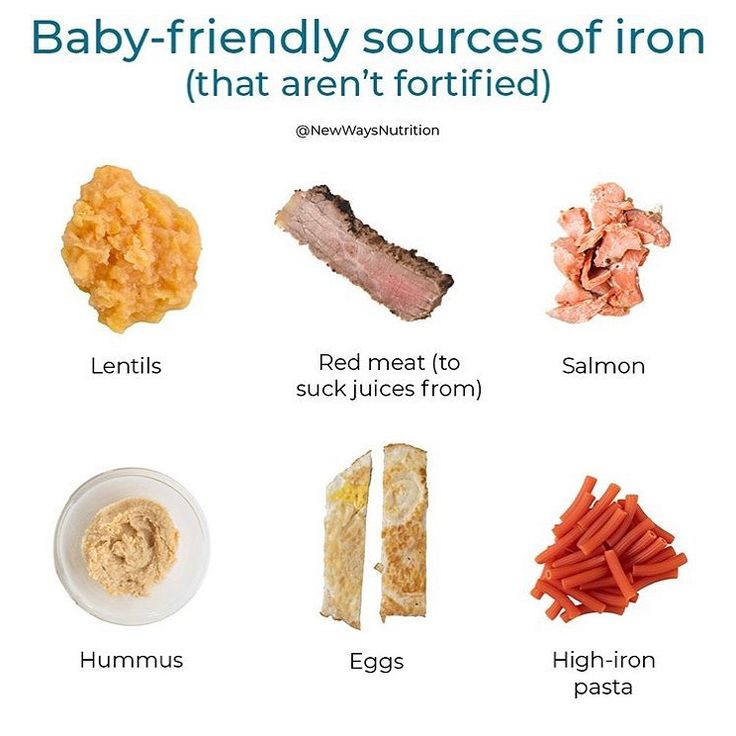 But since iron deficiency and iron deficiency anemia are still common issues with kids and it can impact their development and behavior, it’s important to try to include iron-rich foods in their daily meals.
But since iron deficiency and iron deficiency anemia are still common issues with kids and it can impact their development and behavior, it’s important to try to include iron-rich foods in their daily meals.
For some context, according to the American Academy of Pediatrics, “Among children ages 1 to 3 years, iron deficiency occurs in 6.6 percent to 15.2 percent of toddlers, depending on ethnicity and socioeconomic status.” Which is much higher than I would have expected. They say that preterm infants, exclusively breastfed infants, and infants at risk of developmental disabilities are at higher risk for deficiencies.
I never want any parents to worry excessively about their child’s nutritional intake and thankfully, adding iron to a diet is actually quite easy.
(My favorite iron-rich recipes include Spinach Muffins, Extra-Veggie Baby Pasta, Oatmeal Bars, Meatballs, Chicken Puree, Butter Chicken, Chicken Tacos and Spinach Eggs. For more, scroll down.)
How much iron does my child need?
Toddlers ages 1 to 3 years need 7 mg/day of iron.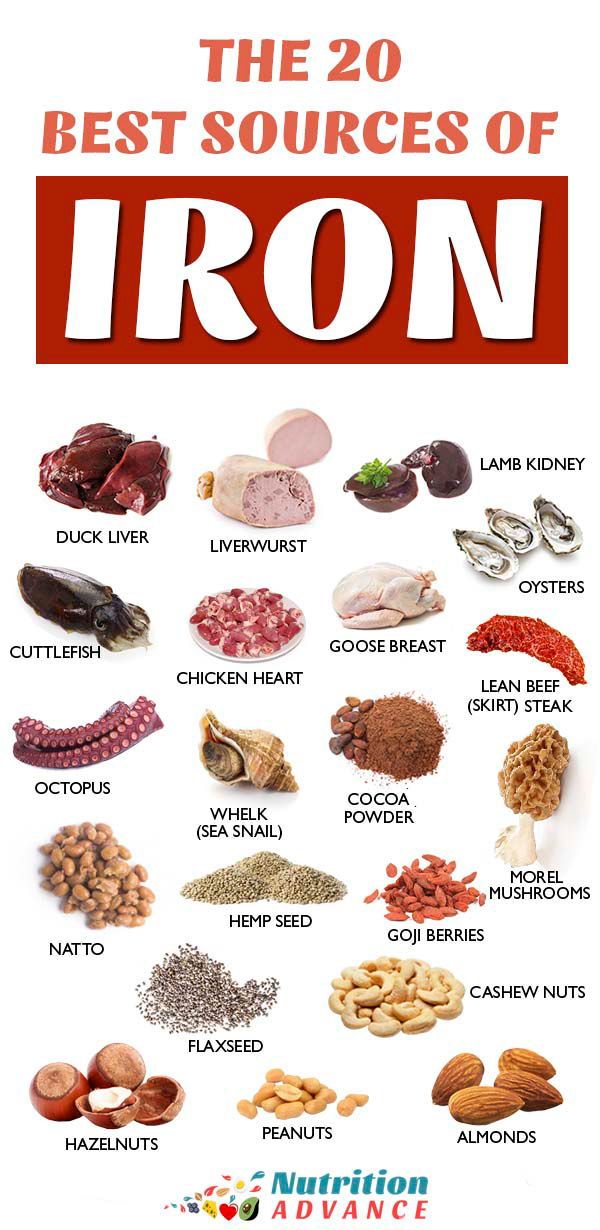 Kids aged 4-8 need 10 mg/day. For context:
Kids aged 4-8 need 10 mg/day. For context:
- ¾ cup of Cheerios: 6 mg
- 1 serving fortified infant oatmeal: 5 mg
- 4 ounce hamburger: 5 mg
- 2 ounces Banza chickpea pasta: 4 mg
- ½ cup dried peaches: 3.2 mg
- 2 ounces Barilla red lentil pasta: 3 mg
- ½ cup of lentils: 3 mg
- 1 cup prune juice: 3 mg
- Spinach Quesadilla: 2.1 mg
- ½ cup dried apricots: 1.7 mg
- ½ cup oatmeal: 1.7 mg
- Simple Green Smoothie: 1.7 mg
- Spinach Banana Muffin: 1.4 mg
- 1 egg: 1.4 mg iron
- ½ cup raisins: 1.5 mg
- 1 slice whole wheat bread: 0.7 mg
- ½ cup fortified baby puffs: 0.7 mg
- 1 ounce hummus: 0.7 mg
- 2 tbsp peanut butter: 0.6 mg
- ½ cup edamame beans: 0.5 mg
- 1 cup watermelon: 0.4 mg
TIP: It’s possible that your kiddo is already getting enough just by eating normal toddler-size servings.
Does my child need an iron supplement?
This question will vary a lot by child so it’s best to check in with your doctor.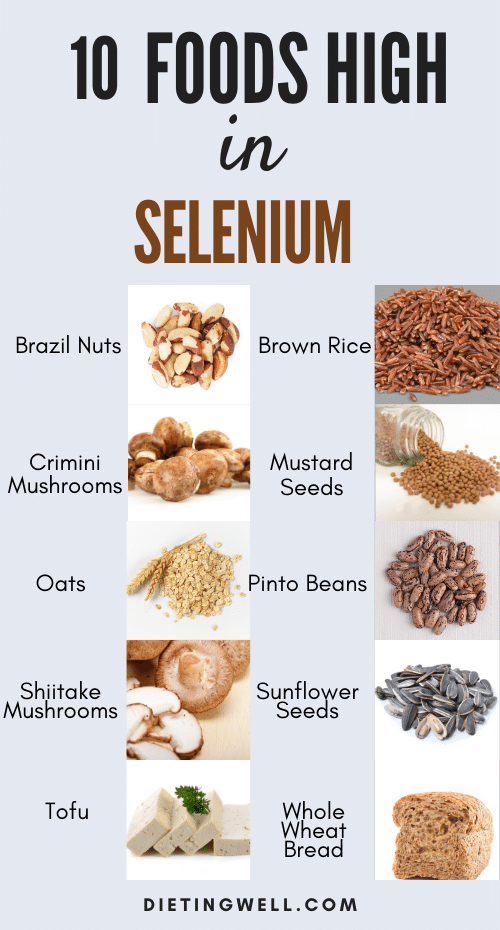 Kids are routinely screened for iron deficiency when they’re babies and toddlers, so definitely discuss this with your pediatrician if you don’t remember what those results were, if your child is older, or if you’re just curious about supplementing.
Kids are routinely screened for iron deficiency when they’re babies and toddlers, so definitely discuss this with your pediatrician if you don’t remember what those results were, if your child is older, or if you’re just curious about supplementing.
It can be hard to find a multivitamin with iron, so check your label, or consider a separate iron supplement in consultation with your doctor.
What are the best sources of iron for kids?
The AAP recommends that iron comes from iron-rich foods first and foremost. The type of iron in meat, fish, and poultry is easier for our bodies to absorb, but adding a range of iron-rich foods is your best bet. Here are some examples of foods with a good dose of iron.
- Red meats like beef and lamb
- Dark meat poultry
- Fish including shrimp and oysters
- Iron-rich vegetables including dark leafy greens (think Popeye!), baked potatoes, and pumpkin
- Beans and legumes like kidney beans, lentils, and tofu
- Fortified cereals like Cheerios and some hot cereals including baby oatmeal
- Whole grains and whole grain products (including some of the newer bean pastas like Banza)
TIP: A toddler-size serving of meat is 2 tablespoons to ¼ cup.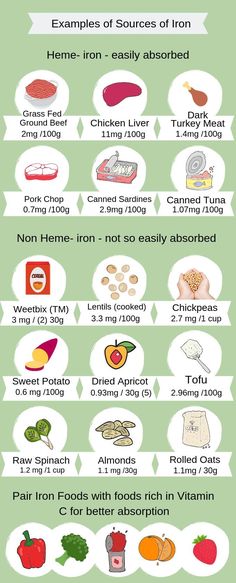 A toddler-size serving of produce is 2 tbsp to ¼ cup. A serving of beans and legumes is 1-2 tablespoons for younger kids and ¼ cup for older kids. (Find more specifics in my Daily Toddler Nutrition Guide.)
A toddler-size serving of produce is 2 tbsp to ¼ cup. A serving of beans and legumes is 1-2 tablespoons for younger kids and ¼ cup for older kids. (Find more specifics in my Daily Toddler Nutrition Guide.)
Top 10 Best Iron-Rich Foods for Babies
Here are my go-to foods with a lot of iron that you can feed to a baby who’s eating purees or baby led weaning style foods.
- Beef, ground
- Bean puree
- Beans, very soft and lightly mashed
- Bean pasta, cooked very soft (like Banza)
- Chicken, finely shredded or ground or Chicken Puree
- Eggs, scrambled or Egg Yolk Puree
- Green bean puree
- Infant cereal like baby oatmeal, fortified
- Oatmeal
- O cereal
- Smoothies with spinach or kale (serve on a spoon or in a reusable pouch)
- Sweet potatoes, mashed
- Pea puree
- Peanut butter puree
- Strawberry puree
TIP: Iron stores in babies start to run out starting around 6 months, so you’ll want to incorporate these foods into your baby’s diet from an early age.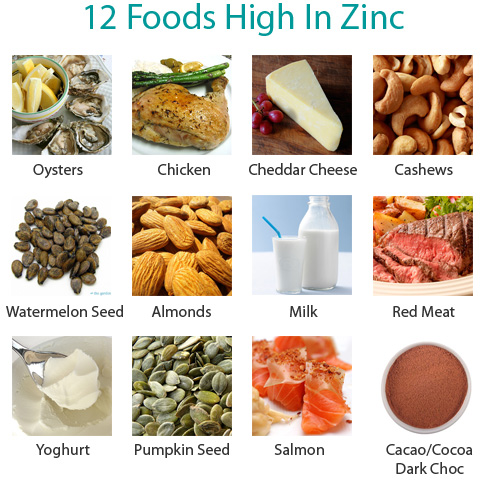
Top 15 Best Iron-Rich Foods for Toddlers and Big Kids
These foods are easy to prepare and packed with iron for kids.
- Apricots, dried
- Beans
- Bean pasta (like Banza with marinara sauce)
- Beef burgers
- Broccoli
- Eggs
- Green beans
- Oatmeal
- Peanut butter
- Raisins
- Smoothies with spinach or kale
- Spinach Pesto
- Strawberries
- Watermelon
- Wheat bread
TIP: Aim to serve 2-3 of these foods (from either the baby or toddler list) most days and you should easily provide enough opportunities for your child to eat enough iron.
Add Vitamin C for Increased Iron Absorption
If you pair iron-rich foods with produce with plenty of Vitamin C—think citrus, strawberries, kiwi, tomatoes, dark greens, and bell peppers—the iron will be more readily absorbed by the body. Some ideas to consider:
- Pasta with Meatballs (Vitamin C from tomatoes, iron from beef)
- Bean Burritos with salsa (iron in beans, Vitamin C from salsa)
- Bean Quesadillas with chopped tomatoes on the side (iron in beans and whole grain tortilla, Vitamin C from tomatoes)
- Simple Green Smoothie (iron from greens, Vitamin C from fruit)
- Spinach Banana Muffins with Banana with kiwi (iron in spinach, Vitamin C from kiwi)
Limit Milk to No More than 24 Ounces Each Day to Avoid Limiting Iron Absorption
Experts at the Mayo Clinic also advise against letting the kids have more than 24 ounces of milk in a day (or three 8 ounce servings) which could negatively impact iron absorption. That much milk could also make them less hungry for other foods, which could also limit how much iron they’re able to eat through foods.
That much milk could also make them less hungry for other foods, which could also limit how much iron they’re able to eat through foods.
50 Best Iron-Rich Recipes for Babies, Toddlers, and Kids
Here are some of my favorite recipes for kids of all ages that are rich in iron. (The list is organized alphabetically for easy reference, not in order of preference!)
- Bean Puree
- Bean Pasta with Marinara Sauce
- Beef Burritos with Veggies
- Black Bean Quesadillas
- Black Bean Soup with Citrus
- Broccoli Pesto
- Broccoli Cheddar Soup
- BBQ Shredded Chicken
- Cheesy Meat Buns
- Chicken Meatballs with Sweet Potato
- Chocolate Smoothie with Hidden Veggies
- Green Smoothie
- Kale Bites
- Lentils and Rice with Dried Fruit
- Lentils with Tomatoes and Italian Spices
- Lentil Soup with Veggies
- Lentil Falafel
- Meatballs with Hidden Veggies
- Mini Egg Muffins
- Mexican Egg Muffins with Spinach
- Moroccan Lamb Meatballs
- No-Bake Energy Bites
- Nut-Free Hummus
- Oatmeal with Apple and Raisins
- Oatmeal Bars
- Oatmeal with Pumpkin
- Pesto Chicken and Brown Rice
- Potato Nachos
- Pumpkin Oatmeal Bars
- Pumpkin Oatmeal Muffins
- Slow Cooker Chicken and Bean Tacos
- Slow Cooker Black Bean Soup
- Slow Cooker Chicken Tacos
- Spinach Banana Muffins with Banana
- Spinach Pancakes
- Spinach Eggs
- Spinach Pesto
- Spinach Quesadillas
- Strawberry Puree
- Strawberry Smoothie
- Strawberry Muffins
- Sweet Potato Quesadillas
- Sweet Potato Baby Food
- Tofu Nuggets
- Tofu, Baked
- Tofu with Sesame
- Whole Wheat Bread
- Veggie Chili
- Veggie Chili Mac
- Zucchini Burgers
Printable Iron-Rich Foods List
For easy reference, you can print this list of iron-rich foods for kids keep in your kitchen, or save the image on your phone.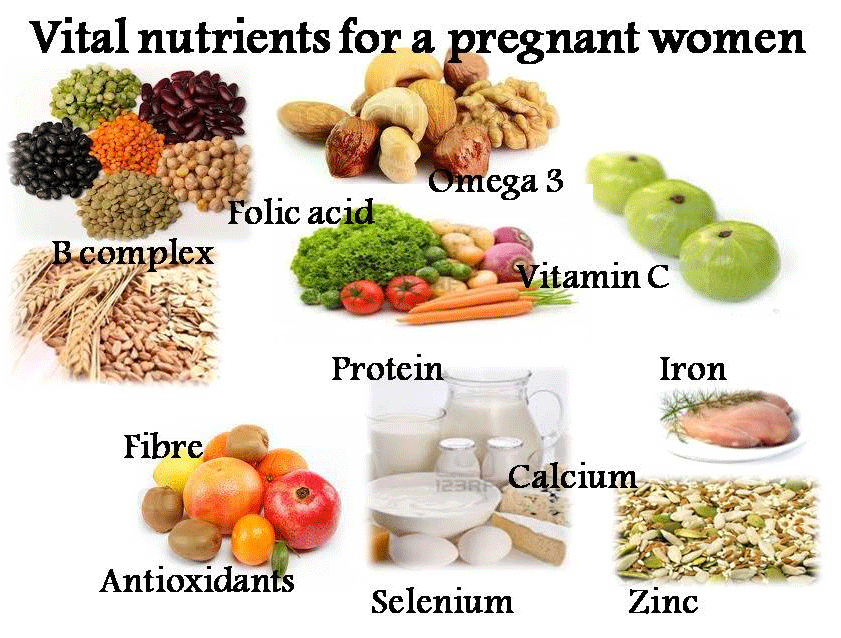 Simply sign up for my newsletter and gain access to my entire FREE Resource Library of printables.
Simply sign up for my newsletter and gain access to my entire FREE Resource Library of printables.
Related Recipes
I’d love to hear if iron has been an issue for you with your kids. Chime in below in the comments!
10 products for immunity, good vision and healthy skin
Zinc is an important trace element that affects both individual functions and the body as a whole. Zinc is involved in wound healing, the formation of DNA and hemoglobin. In this article, we will tell you why you need zinc, and which foods contain the most zinc.
Zinc and health - what you need to know
Zinc affects many vital functions of the body, namely the state of vision, immunity, skin health and much more. So, what and how does zinc affect? nine0005
- Vision
Vitamin A is essential for good vision, and zinc is essential for proper absorption of vitamin A. A diet rich in zinc improves night vision. In addition, zinc reduces the likelihood of age-related macular degeneration, which leads to vision loss.
In addition, zinc reduces the likelihood of age-related macular degeneration, which leads to vision loss.
- Cold resistance
Zinc affects the work of T-cells, as well as the self-reproduction of DNA, which directly affects the state of the immune system. Simply put, people who are deficient in zinc are more likely to get colds. nine0005
- Acne and sores
Like most vitamins and microelements, zinc affects not only the internal state, but also the appearance. Zinc is essential for healing wounds and cuts. In addition, zinc supports the health of the digestive tract, which affects the condition of the skin.
- Other
Zinc has been shown in separate studies to affect prostate health and is essential for the prevention of prostate cancer. In addition, zinc affects male reproductive functions. nine0005
Zinc deficiency symptoms
Zinc deficiency symptoms include frequent colds, leaky gut syndrome, persistent diarrhea, poor eyesight, infertility, thinning hair, stunted growth in children, and slow wound healing.
The recommended daily allowance for zinc in the diet is 11 mg for men and 8 mg for women.
People who are at risk for zinc deficiency: vegetarians, pregnant women, people with digestive problems, people who abuse alcohol. nine0005
Top 10 Foods High in Zinc
1. Seafood
100 grams of cooked oysters contain 78.6 mg of zinc (more than 5 DV). Also, zinc is found in lobster and crab meat. Since these foods are very high in zinc, it is not recommended to eat them too often.
2. Meat
If you like meat, you are less likely to be deficient in zinc than vegetarians. Most zinc is found in beef, lamb, pork, chicken and turkey. For example, 100 grams of beef contains 12.3 mg of zinc. nine0005
3. Wheatgrass
An excellent source of zinc for vegetarians is wheatgrass (100 grams contains 16.7 mg of zinc). If you don't know what to cook with wheatgrass, try adding it to salads.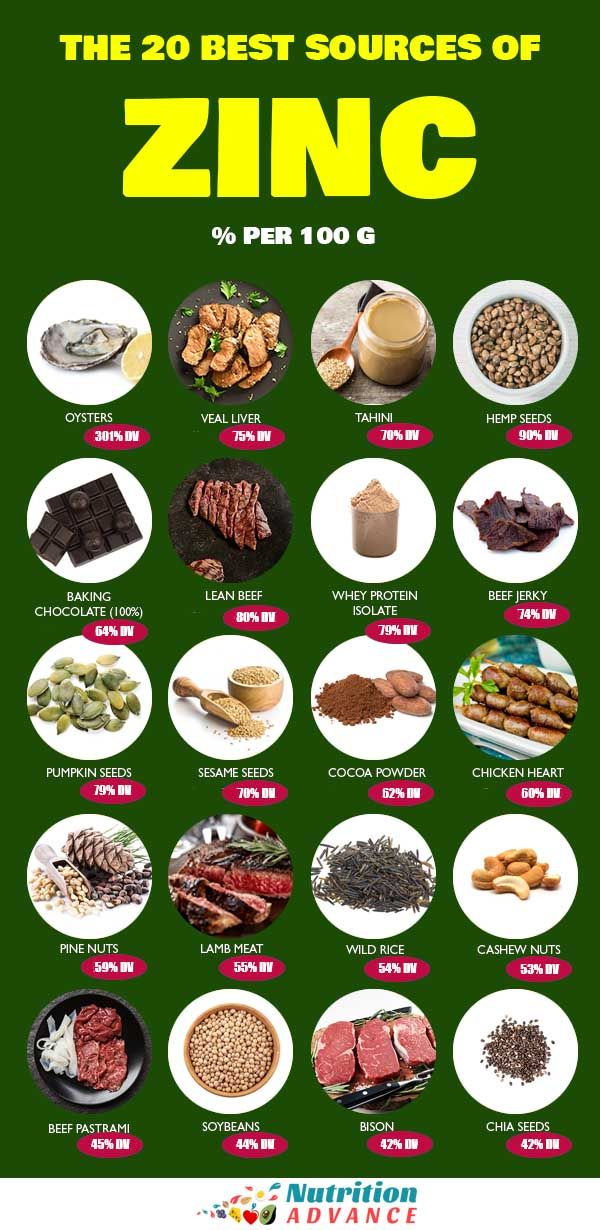
4. Spinach
Spinach is a leading product in terms of vitamins and useful trace elements. It contains vitamins A, E, K, as well as calcium, iron, magnesium and potassium. 100 grams of spinach contains 0.8 mg of zinc. nine0005
5. Seeds
Pumpkin seeds contain 10.3 mg of zinc in 100 grams. In addition, zinc is found in sesame seeds, sunflower seeds, Spanish sage, and flax seeds.
6. Nuts
Nuts are also considered a good source of zinc. In particular, cashews have the most zinc at 5.6 mg per 100 grams. Other types of nuts that contain zinc include pine nuts, pecans, almonds, walnuts, peanuts, and hazelnuts.
7. Cocoa and chocolate
Cocoa and chocolate are not only delicious, but also healthy. 100 grams of cocoa powder contains 6.8 mg of zinc, while 100 grams of dark unsweetened chocolate contains 9.6 mg. It turns out that the habit of indulging yourself in chocolate brings health benefits! To learn how to cook cocoa, read our article "What is the use of hot cocoa with milk and how to cook it - 5 recipes. "
"
8. Vegetables, legumes and mushrooms
Some vegetables and legumes are also sources of zinc. These are soybeans, peas, lima beans, green beans, Brussels sprouts and asparagus, chard, potatoes and pumpkin. Zinc is also contained in some types of mushrooms, such as morel, portobello (champignon variety), oyster mushroom, etc.
9. Dairy and sour milk products
Good sources of zinc are yogurt and kefir. Depending on the fat content and manufacturer, a cup of yogurt or kefir can contain about 2 mg of zinc. In addition, both yogurt and kefir are rich in probiotics, which are beneficial for the condition of the intestines and the body as a whole. Also, zinc is found in cheddar and mozzarella (about 3 mg per 100 grams of cheese).
10. Fruits
Zinc is not found in all fruits and not in very large quantities. Sources of zinc are avocados, pomegranates, berries (blackberries, raspberries, loganberries), dates.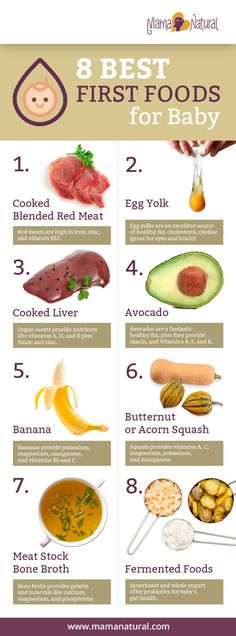 nine0005
nine0005
what products contain, how to take them correctly according to doctors
Zinc is one of the vital trace elements for humans. He takes part in many processes: from the regeneration of skin cells to the formation of immunity. Maintaining the optimal amount of zinc in the body is a task that everyone should set for themselves. To solve it, it is necessary to understand how zinc enters the human body. We will understand this and other issues, as well as list foods rich in zinc. nine0005
Useful information about zinc
Zinc plays an important role in human life (1). It is part of more than 300 enzymes that catalyze the hydrolysis of proteins, peptides, some aldehydes and esters.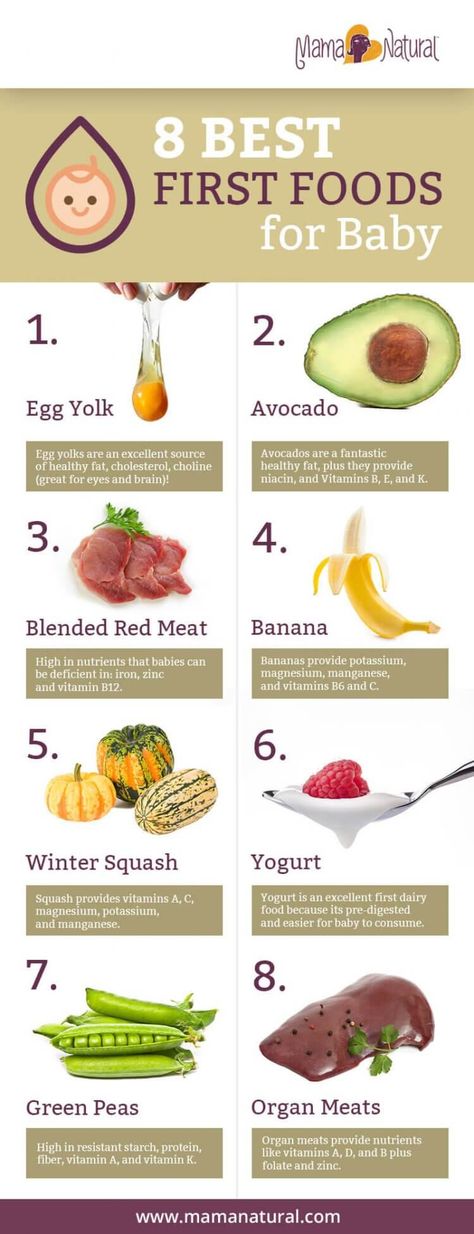 The element is involved in carbohydrate metabolism with the help of insulin, a hormone that contains zinc. Only in the presence of zinc does vitamin A work. This element is also needed for bone formation. Zinc has antiviral and antitoxic effects. It affects the sense of smell and taste. nine0005
The element is involved in carbohydrate metabolism with the help of insulin, a hormone that contains zinc. Only in the presence of zinc does vitamin A work. This element is also needed for bone formation. Zinc has antiviral and antitoxic effects. It affects the sense of smell and taste. nine0005
Scientists have found a link between the content of zinc in the body and the mental abilities of a person. That is, the element ensures the proper functioning of the brain and high mental performance (2).
| Fact | Description |
| The body of an adult contains about 2-3 g of zinc (3) | This is one of the most common metals (after iron). The highest concentration of zinc is in muscles (about 60%) and bones (about 30%) (4) |
| An excess of zinc is rare | Zinc does not accumulate and is excreted fairly quickly. The main way the element enters the human body is through food |
| Recommended Daily Value of zinc | For men - 15 mg per day For women - 12 mg per day For children - 5 mg per day |
| Zinc deficiency can lead to serious consequences | Lack of zinc in the body leads to impaired growth, decreased immunity, impaired central vision, and complications during pregnancy (4) |
Who is recommended to eat foods rich in zinc
Everyone should eat foods containing zinc in moderation.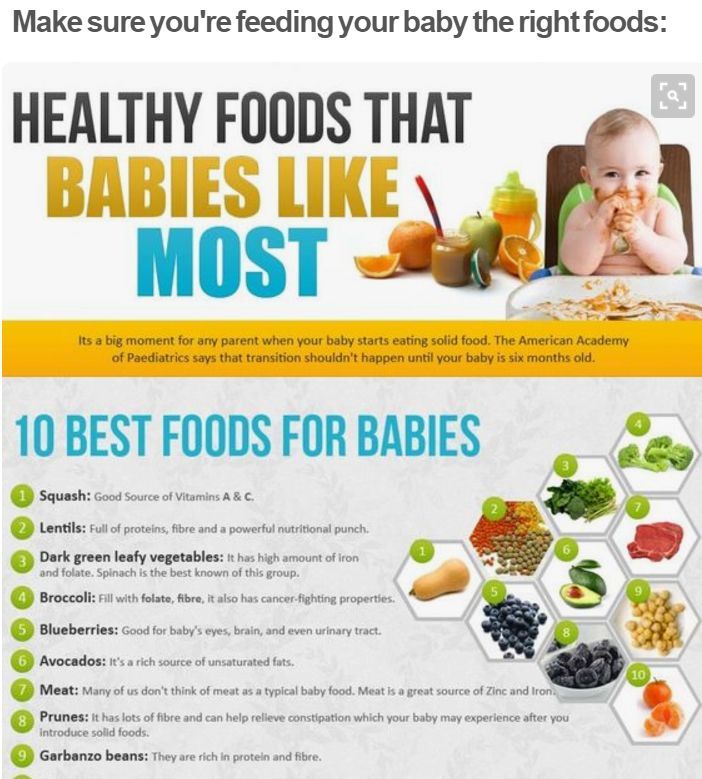 But there are categories of people for whom this is especially important. For example, pregnant and lactating women who have a lot of vitamins and minerals "pass" to the child. Foods rich in zinc should also be consumed by vegetarians, as they do not eat meat, which is one of the main sources of this trace element. Another category of people who need zinc-containing products is the elderly. They often suffer from zinc deficiency due to metabolic disorders and malnutrition. nine0005
But there are categories of people for whom this is especially important. For example, pregnant and lactating women who have a lot of vitamins and minerals "pass" to the child. Foods rich in zinc should also be consumed by vegetarians, as they do not eat meat, which is one of the main sources of this trace element. Another category of people who need zinc-containing products is the elderly. They often suffer from zinc deficiency due to metabolic disorders and malnutrition. nine0005
What foods contain zinc
Zinc is found in many foods of animal and vegetable origin. Most of them are easy to incorporate into your daily diet. Consider the top 15 foods rich in zinc.
1. Seafood
Photo: Maksim Konstantinov, globallookpress.com Most zinc is found in seafood. In 100 grams of oysters, there are from 70 to 80 mg of zinc - this is more than five daily doses of the element. Crab contains 7.6 mg of zinc per 100 g (half the daily value). Another seafood rich in zinc is lobster.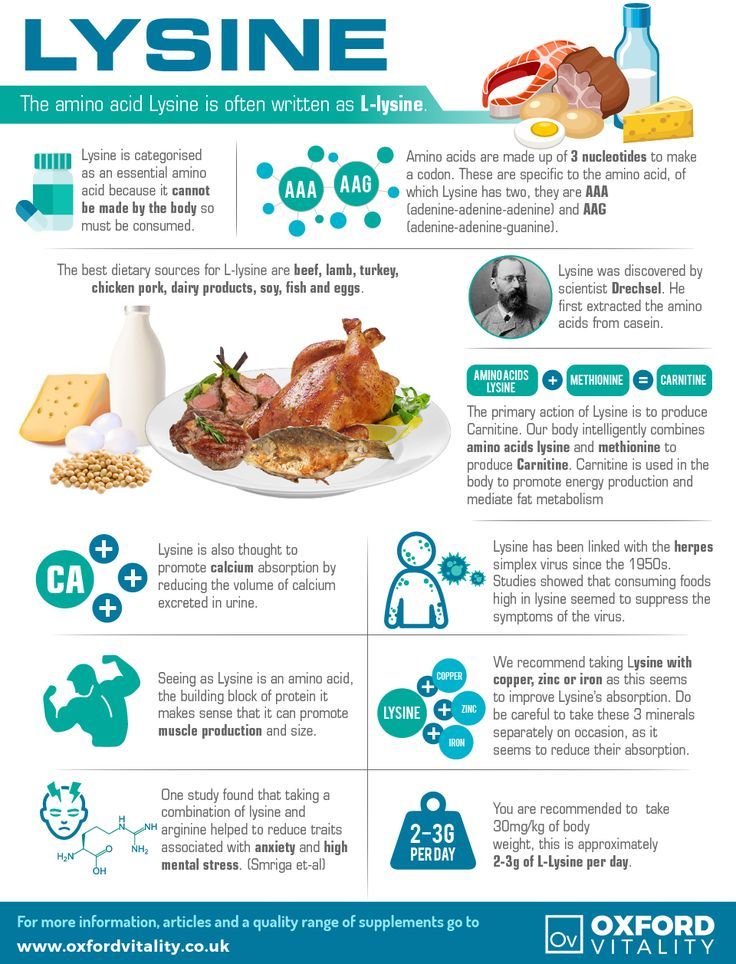 In its composition, it has about 4 mg of zinc per 100 g.
In its composition, it has about 4 mg of zinc per 100 g.
Learn more
2. Pumpkin seeds
Photo: Jürgen Pfeiffer, globallookpress.comPumpkin seeds contain a large amount of zinc (about 10 mg per 100 g). This is approximately 70% of the daily dose. Pumpkin seeds are a source of fiber, antioxidants, vitamins and minerals. The optimal amount of seeds that an adult should consume is 30 g per day.
3. Bran
Photo: pixabay.comBread, crispbread, and other products made from bran contain a large amount of vitamins, amino acids and minerals, especially zinc. They are beneficial for human health, as they help the digestive organs, remove toxins from the body, improve the condition of the skin and hair. For example, wheat bran contains 7 to 8 mg of zinc per 100 g (about 60% of the daily dose). nine0005
4. Meat
Photo: pixabay.com A lot of zinc is found in beef, pork, lamb and turkey. Red meat is a rich source of protein and other beneficial elements.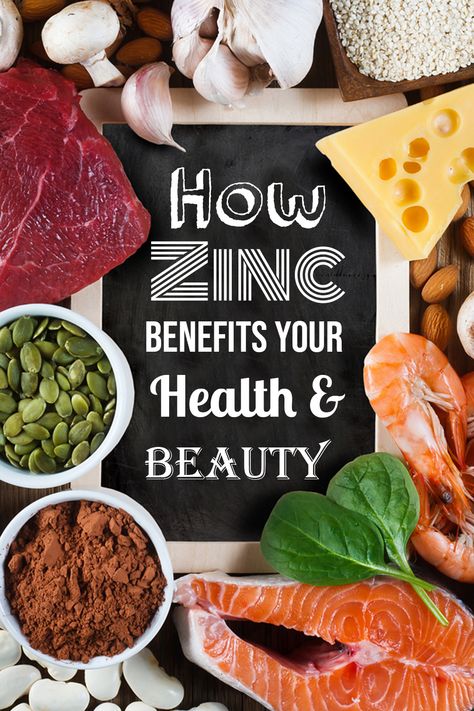 100 g of beef contains more than 6 mg of zinc, lamb - 5 mg, pork - about 3 mg. This is from 25 to 60% of the daily requirement. However, you should not abuse meat, because its excessive inclusion in the diet increases the risk of cardiovascular diseases.
100 g of beef contains more than 6 mg of zinc, lamb - 5 mg, pork - about 3 mg. This is from 25 to 60% of the daily requirement. However, you should not abuse meat, because its excessive inclusion in the diet increases the risk of cardiovascular diseases.
Learn more
5. Nuts
Photo: Jürgen Pfeiffer, globallookpress.comNuts are also considered an important source of zinc. For example, 100 g of cashew contains more than 5.5 mg of zinc (almost 40% of the daily dose). Other nuts that contain zinc include pine nuts, walnuts, peanuts, almonds, hazelnuts, and pecans.
Learn more
6. Legumes
Photo: Paul Williams — Funkystock, globallookpress.com Legumes contain a large amount of zinc. For example, 100 g of beans, chickpeas and lentils contain about 27% of the daily intake of zinc - this is more than 3 mg of the substance. But the beneficial substances in legumes are not absorbed as well as in animal products. Legumes are best eaten raw or boiled. nine0005
nine0005
Learn more
7. Eggs
Photo: Fernando Gutierrez-Juarez, globallookpress.comAnother food rich in zinc is the chicken egg. Its yolk contains about 3 mg of zinc per 100 g - this is 26% of the daily requirement for an adult. In addition to zinc, chicken eggs are rich in calcium, magnesium, phosphorus, iron, iodine and other useful substances. They are recommended to be consumed daily in the amount of 1-2 pieces per day.
Learn more
8. Dark chocolate and cocoa
Photo: Ralph Kerpa, globallookpress.comCocoa and dark chocolate contain a lot of zinc. 100 g of cocoa powder contains 6-7 mg of a trace element, and 100 g of 75% chocolate contains more than 3 mg. In addition to zinc, these products contain calcium, phosphorus, magnesium, iron, and B vitamins. Since chocolate is high in calories, it should definitely not be abused. The optimal daily intake is 50-60 g per day.
9. Cheese
Photo: pixabay.com Record holders for the content of zinc among cheeses are hard varieties such as parmesan and cheddar. They contain from 3 to 5 mg of the mineral per 100 g. This covers about 20-40% of the daily requirement of zinc. In addition, cheeses are rich in other substances beneficial to the human body: calcium, phosphorus, potassium and vitamins B, A, D, C, PP, E.
They contain from 3 to 5 mg of the mineral per 100 g. This covers about 20-40% of the daily requirement of zinc. In addition, cheeses are rich in other substances beneficial to the human body: calcium, phosphorus, potassium and vitamins B, A, D, C, PP, E.
Learn more
10. Whole grain porridge
Photo: Victor Lisitsyn, globallookpress.comOne serving of whole grain porridge can contain half the daily requirement of zinc. This is especially true for barley (2.8 mg per 100 g), buckwheat (2.5 mg per 100 g) and wheat (1 mg per 100 g) groats. Porridge is a healthy product, because their composition is rich in various vitamins and microelements. Another important plus is low calorie content.
Learn more
11. Oils
Photo: pixabay.comVegetable oils are also zinc-rich foods. For example, flaxseed (7 mg per 100 ml) and coconut (2 mg per 100 ml). In addition, zinc is found in sesame, peanut, grape seed and pumpkin seed oils.
Learn more
12.
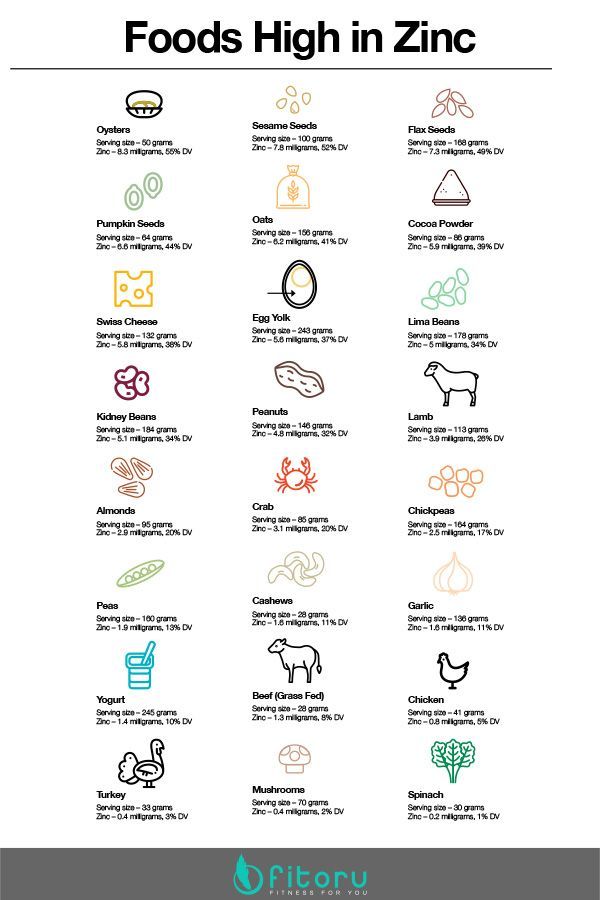 Dairy products Photo: pixabay.com
Dairy products Photo: pixabay.com Dairy products are valuable sources of zinc, especially yogurt and kefir. Depending on the composition and fat content, in 100 g they can contain up to 2 mg of zinc. Dairy products are also rich in probiotics, which have a beneficial effect on the intestines and the body as a whole. nine0005
13. Greens
Photo: pixabay.comGreens are a storehouse of vitamins, minerals and beneficial trace elements, including zinc. Parsley is the leader in its content, because 100 g of this product contains approximately 9% of the daily intake of the substance (1 mg). In second place are dill and basil (0.9 and 0.8 mg per 100 g), in third place is spinach (more than 0.5 mg per 100 g).
Learn more
14. Vegetables
Photo: pixabay.comMany vegetables are rich in zinc. For example, asparagus contains up to 5% of the daily requirement of zinc per 100 g, beets - 4%, and Brussels sprouts and potatoes - about 3%. nine0005
Learn more
15.
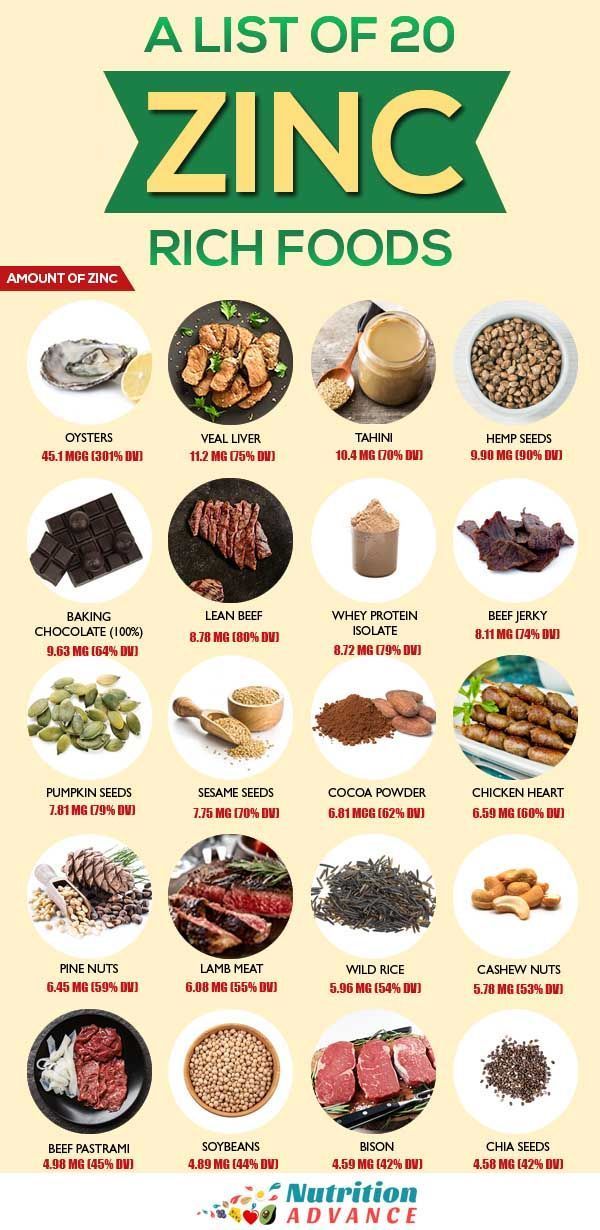 Fruits Photo: Sebastian Kahnert, globallookpress.com
Fruits Photo: Sebastian Kahnert, globallookpress.com Some fruits contain zinc in small amounts. 100 g of avocado contains 0.65 mg of zinc, pomegranate - 0.35 mg, apricot - 0.08 mg.
Find out more
How to properly consume foods with zinc
Now let's talk about how to consume foods containing zinc.
Follow the measure
The recommended intake of zinc for an adult is 12-15 mg per day. With a significant excess of the dose, you can get unpleasant consequences in the form of abdominal pain, diarrhea, nausea, and impaired taste / smell. nine0005
Choose the right cooking method
To get the most out of your food, you need to cook it right. For example, legumes need to be soaked and steamed for a long time. As for meat, it should be stewed or baked (frying is not the healthiest option). Vegetable oils should not be subjected to heat treatment - it is better to just add a couple of spoons to the salad.
Aid zinc absorption
Vitamins B, A, and C are essential for good zinc absorption.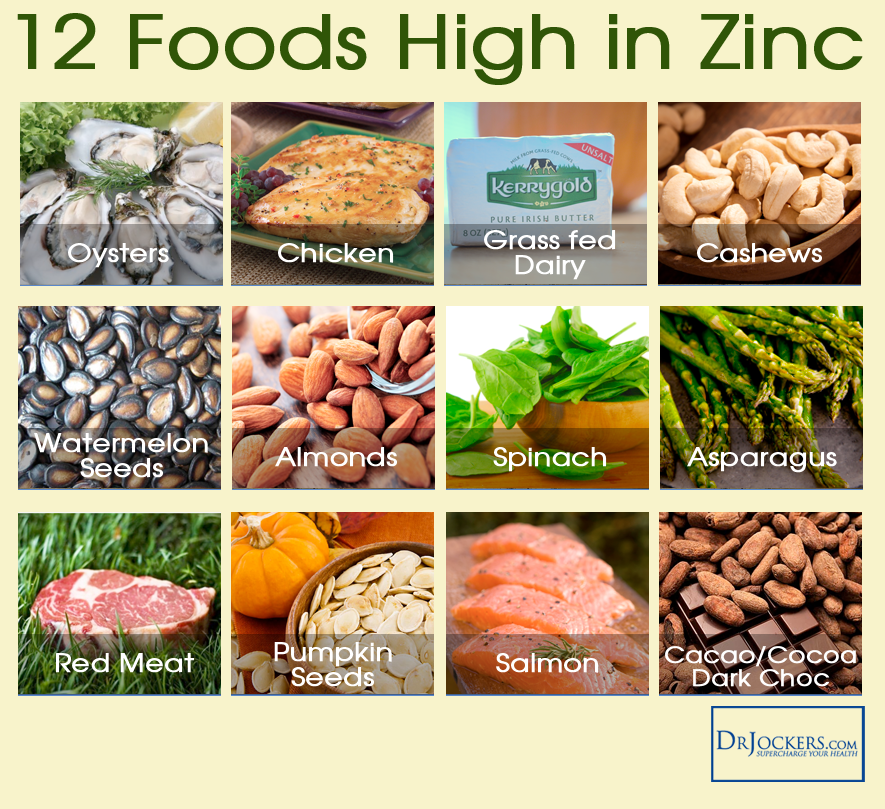 To maintain optimal levels of zinc in the body, foods rich in these vitamins should be included in the diet. Alcohol and coffee, on the contrary, interfere with the absorption of zinc, so it is better not to use them together with zinc-containing foods. nine0005
To maintain optimal levels of zinc in the body, foods rich in these vitamins should be included in the diet. Alcohol and coffee, on the contrary, interfere with the absorption of zinc, so it is better not to use them together with zinc-containing foods. nine0005
Reviews of doctors about products with zinc
Physician of the Clinical Hospital on the Yauza of the Medscan group Lina Dmitrochenko:
— Zinc is a metal that is vital for our body. It is responsible for the proper functioning of the reproductive system, mental development, helps strengthen bone tissue, heal fractures and heal wounds. Children especially need this microelement during the growth period.
Doctor of preventive and anti-aging medicine, nutritionist, nutritionist Natalya Zubareva:
— Zinc is not produced in the body, so we must replenish its reserves daily from the outside.
Popular questions and answers
Questions answered by our experts Natalia Zubareva and Lina Dmitrochenko.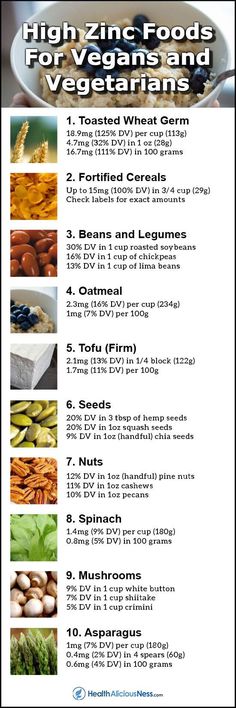
How to find out if there is a lack of zinc in the body?
Natalya Zubareva:
— Signs such as frequent colds, exacerbations of autoimmune diseases, including dysfunction of the thyroid gland, allergies, and brittle nails and hair, can indicate a lack of zinc in the body. Constant fatigue, lethargy, depressed mood, poor appetite - this can also be a zinc deficiency. When it comes to cravings for certain foods, cravings for red meat definitely signal a zinc deficiency. nine0005
Lina Dmitrochenko:
— Early manifestations of micronutrient deficiencies include irritability, nervousness, in some cases agitation, and, on the other hand, lethargy and loss of appetite. In more serious cases, there are problems with wound healing, weakened immunity and frequent infectious diseases, hair loss, brittle nails, deterioration of night vision up to the development of night blindness, damage to the skin, thyroid gland and liver.
Who is at risk for zinc deficiency? nine0185
Natalia Zubareva:
— Pregnant and lactating women, vegetarians, patients with diabetes, people experiencing active physical activity, and the elderly are at risk for zinc deficiency.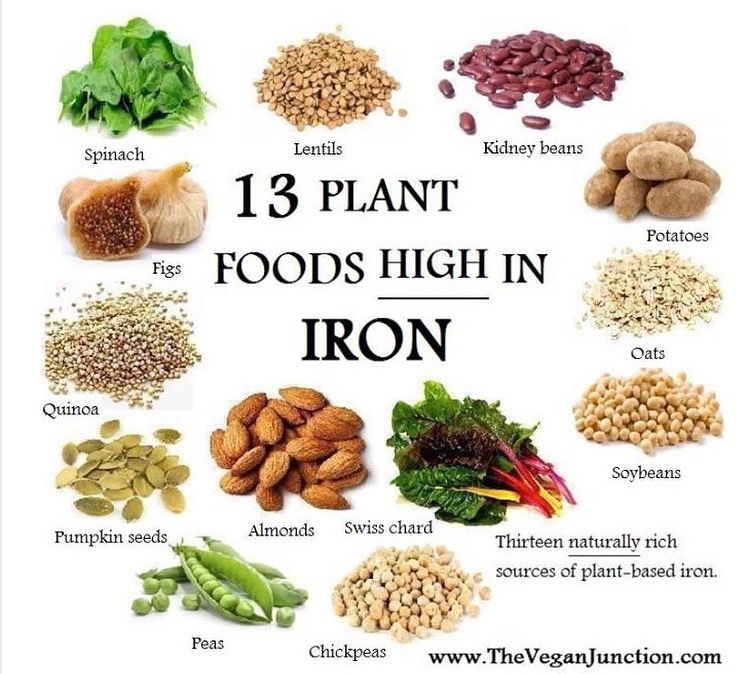
Lina Dmitrochenko:
— In addition, the risk group includes people with chronic inflammatory diseases of the gastrointestinal tract, as well as those who abuse alcohol.
What foods interfere with zinc absorption?
Natalya Zubareva:
- It is not specific foods that interfere with the absorption of zinc, but phytates, which, like zinc, are found in legumes, oats, brown rice, wheat and quinoa. Therefore, as a source of zinc, I recommend choosing red meat, cheese, milk, nuts and shellfish. These products are suitable for both male and female diets.
Lina Dmitrochenko:
— The greatest amount of zinc is found in products of animal origin - fish, seafood, eggs, rabbit and chicken meat, beef, young lamb. But tea, coffee, milk, salt, sugar, alcohol, as well as an excess content of copper, tin, manganese, and folic acid in the body interfere with the absorption of zinc. Of the drugs that can lead to micronutrient deficiencies, steroids and oral contraceptives should be noted.



